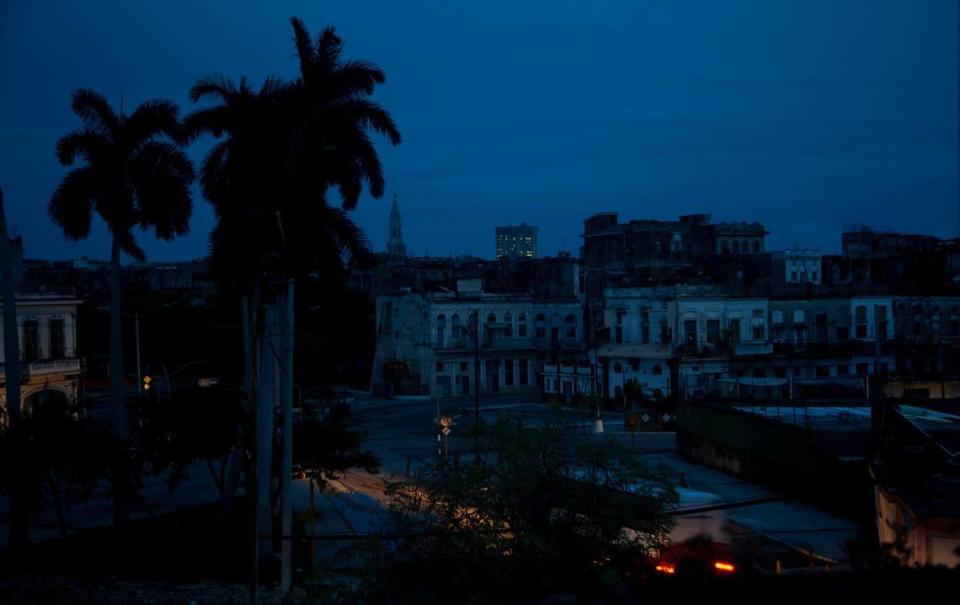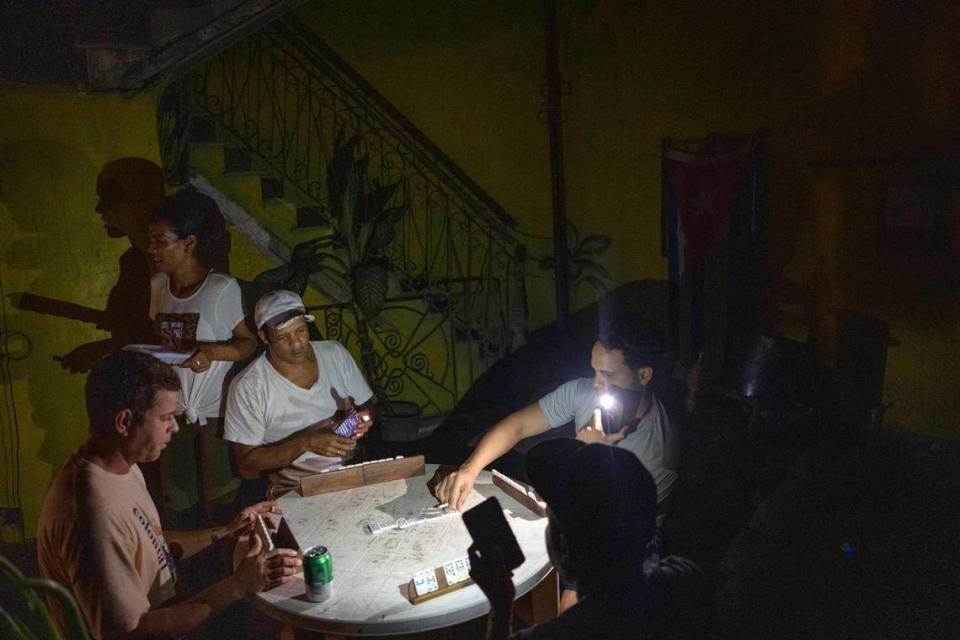Cuba after Ian: How the entire electrical grid collapsed, leaving a nation in darkness
Most of Cuba’s 11 million people remained without electricity Wednesday, after the failure of one of the country’s main power plants Tuesday afternoon brought down the entire electrical grid.
The effects of Hurricane Ian, which battered western Cuba, especially the westernmost Pinar del Río province, on Tuesday with Category 3 winds and torrential rains, played a part, but what happened also resulted from years of mismanagement and the dilapidated state of the island’s electricity grid.
On Tuesday night, Lázaro Guerra Hernández, the company’s technical director, provided different explanations for what he called “an exceptional condition in the electrical grid causing zero electricity generation.”
He said the failure in two connection lines at the Guiteras power station in the province of Matanzas was related to the city of Matanzas experiencing some “adverse” effects from Hurricane Ian. At another moment in the interview with Cuba’s state television, he said that the lines failed because of the overload caused by too much power generation without distribution, as most of western Cuba was without power.
The failed lines created an “imbalance” between the western and eastern grids, causing the entire system to collapse, he said. “There is no electricity service anywhere in the country at this time.”

On Wednesday morning, Cuban state outlet Cubadebate also said the initial failure happened because of “climatological conditions in Matanzas” but then added that the failure was due to a broken cable.
‘Hours of terror’ in Cuba after Ian: Millions without power, massive floods, homes destroyed
On Tuesday night, the entire island had gone dark. A National Oceanic and Atmospheric Administration satellite photo shows an eerie moment of an unlit Cuba contrasted with a bright South Florida.
The lack of electricity means that many of the island’s residents also don’t have running water because pumps aren’t working.
Cubans around the island, still with some charge on their cellphones, were lamenting the situation on social media on Wednesday morning.
“Oh my God, how long can we endure this?” one user said. “Fifteen hours without electricity and communication? How long?”
It will be long, Cuba’s Electricity Union said on Wednesday. In a press release, the company said it was making progress in restoring the grid in eastern and central Cuba. But on the western side, the situation is more “complex,” because the hurricane damaged “a significant part of the transmission network.”
The release said the service will not be restored until the company connects all the regional grids. And in parts like Pinar del Río, seriously affected by the hurricane, it might take even longer.
In the afternoon, Guerra Hernández, the Electrical Union official, said that the service had been restored only on a very limited number of places around the island. But Pinar del Río, Mayabeque and Artemisa remained completely without electricity.
He said company workers were trying to kick-start some of the power plants, as the first step to try to restore the system.
Later on Wednesday, Cuba state news outlet Cubadebate reported that the service has been restored in some Havana neighborhoods, but the Herald confirmed several areas in the capital remained without electricity.

The unlikely event of an entire country being left without electricity was, however, not a surprise for those following what’s happening on the island.
Since the summer, several power stations have been out of commission, constantly broken and needing repair, causing daily blackouts. The energy grid is old, and the government has acknowledged that it has not kept up with maintenance schedules, citing a lack of financing, even though it received a $1.3 billion loan from Russia in 2015 for that purpose.
Damage left by Ian
Cuban state television channel Canal Caribe reported a Wednesday morning government meeting to assess the damage caused by Hurricane Ian, which brought severe winds, rains and dangerous storm surges to Pinar del Río and Artemisa provinces.
According to the report, five buildings collapsed and 68 suffered damage in Havana. It is unclear if those are private homes. More than 16,000 people remain evacuated. Authorities also counted more than a thousand fallen trees.
In Artemisa, at least 27 houses lost their roofs or walls, according to the local defense council. The hospital Abel Santamaría and a maternity home were also damaged. The hurricane winds brought down more than 3,700 acres of banana trees. The local baseball stadium lost two lighting towers and part of its roof.
Cuba’s state news agency Prensa Latina also reported the deaths of two people in Pinar del Río, one of them a woman who died after a wall at her home in the town of San Luis collapsed. The report did not provide details about the second death.
Aerial images on state television in the afternoon show the devastation left by Ian in Pinar del Río. Large swaths of territory are flooded. Like many homes and buildings, several tobacco warehouses lost their roofs or were destroyed.
“The outlook is bleak,” said Yoandy Izquierdo, an activist with the independent Centro Convivencia in Pinar del Río. He walked four miles from his home in the city of Pinar del Río to the farm of his parents, whom they had not heard from after the power and phone service went down on Tuesday. Photos he took along the way and shared with the Herald show buildings with missing windows or roofs, downed trees and areas still flooded.
“My parents are fine; only there is not a single tree left standing,” Izquierdo said. His father also lost the house where he cured tobacco, one of the main economic activities in Pinar del Río.
In Viñales, a tourist area where the famous steep-sided, rounded hills known as mogotes are located, the owner of a private hostel, who asked to be identified only by the name Pedro, said that the hurricane had left a lot of destruction in the village.
“There are many houses destroyed, without a roof,” he said. “The hurricane felt like a very powerful one; our house is very good, and even so, it shook. There are many fallen trees.”
The government has not yet provided a complete assessment of damage to the economy. And despite images of Cuban leader Miguel Díaz-Canel returning to Pinar del Río on Wednesday, there has been little reporting on government efforts to reach the most damaged communities in La Coloma, San Juan y Martínez and other places hit by storm surges.

